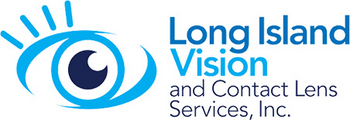Conditions That May Benefit From Medically Necessary Contact Lenses
- LASIK and PRK Complications
- Radial Keratometry Complications
- Pellucid Marginal Degeneration
- Corneal Transplant
- Aniridia
- Iris Trauma or Coloboma
- High Myopia (Nearsighted)
- High Hyperopia (Farsighted)
- High Astigmatism
- Anisometropia
- Aphakia
- Corneal Trauma or Scarring
- Dry Eye
- Sjogren’s Syndrome
- Nystagmus
- Keratoconus
Both medical and vision care plans may cover services and/or materials associated with MNCLs. Each plan has its own definition and list of covered diagnoses.
As the premier contact lens practice on Long Island, we are equipped to handle the most challenging contact lens fittings and designs. We have had patients from all over to be fit in the specialty designs we offer.
We often work with patients for which contact lenses are a medical necessity due to an underlying condition like keratoconus and corneal disfigurement.
Our goal is to optimally correct your vision while providing comfortable lens wear. Designing the lenses necessary to provide the best vision correction and comfort can be difficult, expensive and time-consuming. It can take many lens trials and the fitting process can take months to achieve our goals. Sometimes a combination of different contact lenses and glasses are needed to meet our objective.
Our doctors have advanced training in providing medically necessary contact lenses for irregular corneas.
Our contact lens specialty includes scleral gas permeable lenses for anterior segment pathology, such as keratoconus, dry eye syndrome, post-corneal transplant irregularities, exposure keratopathy, and post-surgical ectasias.
Insurance Information
Many of the services provided by our specialty practice to design your medically necessary contact lenses may be covered by either your vision discount plan or medical insurance. Unfortunately, there are still many insurances that view all contact lenses to be a cosmetic luxury and not the medical device they truly are. We will be more than happy to help you determine your benefits.
What To Expect When Being Fit For Medically Necessary Contacts
MNCLs help improves visual acuity, reduce or eliminate visual aberrations and enable patients to function in everyday life in a way that spectacles and conventional contact lenses cannot. They also improve peripheral vision and reduce eye fatigue and glare. There are many conditions that are considered medically necessary, including corneal ectasias (e.g., keratoconus, keratoglobus or pellucid marginal degeneration) and post-surgical ectasia (e.g., post-LASIK, post-PRK or post-corneal transplant). Aphakia, aniridia, severe dry eye caused by Sjögren’s syndrome, graft-versus-host disease or Stevens-Johnson Syndrome are other examples.
Keep in mind, each vision care and medical plan has its own standard contractual definition of medical necessity as it applies to contact lenses.
EyeMed Vision Care
EyeMed Vision Care provides coverage for medically necessary contact lenses only in the following situations:
Keratoconus
Where the patient is not correctable to 20/30 in either or both eyes using standard spectacle lenses or the provider attests to the specified level of visual improvement
High Ametropia
Exceeding –10D or +10D in the spherical equivalent in either eye
Vision Improvement
For patients whose vision can be corrected two lines of improvement on the visual acuity chart when compared to best corrected standard spectacle lenses
Anisometropia
Of 3D in spherical equivalent or more
Contact lenses can be deemed medically necessary and may be covered by your medical insurance plan in specific cases when spectacle correction does not offer adequate vision.
These cases most commonly include significant corneal irregularity due to keratoconus, corneal scarring or irregularity due to trauma, and high prescriptions from either the surgical removal of the natural lens (Aphakia) or severe nearsightedness (Progressive Myopia).
Our Optometrists Can Help You
Our eye doctors will determine whether your specific eye condition and the particular plan you have covers the “Necessary Contact Lenses” benefit or whether it is excluded. If you do have this benefit, our staff has to make sure that they have not used it during the qualification period.
MNCLs Contact Lenses
There are many different types of medically necessary contact lenses (MNCLs). Often times, MNCLs provide an improved vision that otherwise would not be possible with glasses or standard/cosmetic contact lenses. Medically necessary contact lenses are considered medical devices and differ from regular or “cosmetic” contact lens designs.
Cosmetic Contact Lenses
Cosmetic lenses are elective and are not covered by health insurance. Medical contact lenses are custom to each patient, are associated with a covered medical diagnosis, and may be covered by your insurance. One specific type of MNCL is a scleral contact lens.
Coverage for Medically Necessary Contacts with Medical Insurances
Contact lenses are defined as medically necessary when the patient has an eye disease or prescription that has to be managed with contacts because glasses can’t provide sufficient correction. Examples of diagnoses that may qualify for medically necessary contact lenses are keratoconus, aphakia, post-corneal transplant, corneal dystrophies, ametropia, and anisometropia.
Most contact lenses worn by individuals are classified as an elective vision correction option by insurance companies. Insurance companies consider standard contact lenses a cosmetic choice rather than a medical need. However, for some individuals with specific vision conditions, contact lenses are considered a medical necessity.
Identification
Medically necessary contact lenses are usually needed for individuals with aphakia, pseudophakia, anisometropia, and keratoconus.Conditions can be the side effect of surgery or can be a genetically related condition.
Considerations
Each health care plan has different coverage levels and qualifications for medically necessary contact lens coverage. Many health insurance companies will cover medically necessary contact lenses, even if the policy does not cover standard contact lenses.
Benefits
Medically necessary contact lenses usually offer the wearer greater visual acuity than eyeglasses can provide. Contact lenses may be used as an alternative to replacing the lens of the eye for some eye conditions and may be needed after some optical surgical procedures like cataract removal.
Misconceptions
Individuals who require some sort of vision correction can misunderstand the phrase medically necessary contact lenses.
The phrase is only applied to individuals where standard glasses are not a medically accepted alternative to contact lenses.
